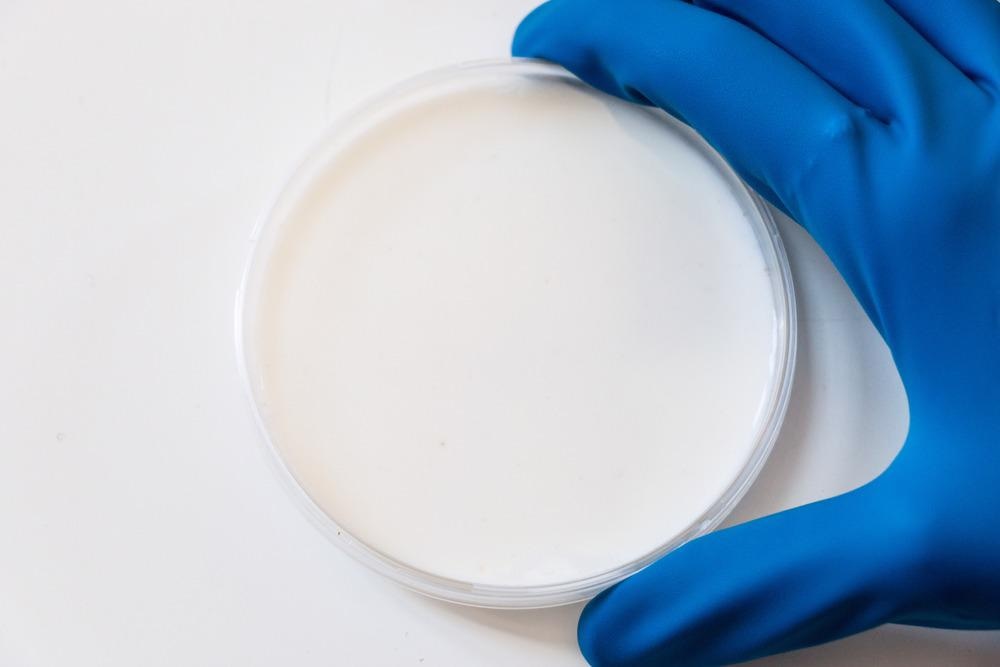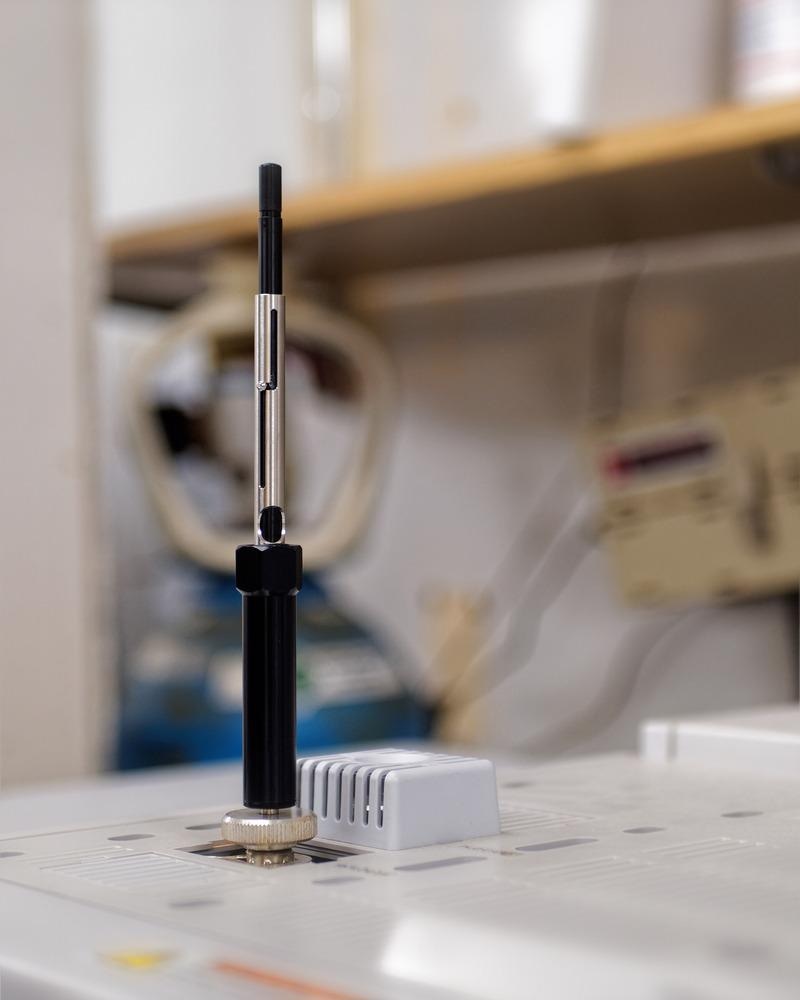Accurate analysis of phytosterols in milk is important - to obtain nutritional information, detect the phytosterol type and also ensure the purity of milk.

Image Credit: Paolo De Gasperis/Shutterstock.com
Phytosterols are plant-derived sterols, with chemical structures similar to cholesterol. Over 250 different phytosterols are identified from plant and marine sources, with similar functions in plants as cholesterol in animals.
Phytosterols have generated immense interest as they compete with cholesterol to be absorbed into the bloodstream, causing health benefits. Studies have reported phytosterols to be chemopreventive, anti-inflammatory, antioxidant, anti-cancerous, antidiabetic, and antiatherosclerotic agents. Phytosterols are not produced by the human body.
Because of these potential benefits, some phytosterols are added to supplement foods. Frequently, milk and milk products are fortified with phytosterols.
However, a high phytosterol diet may reduce the levels of beneficial carotenoids and vitamin D in the blood plasma. Despite the non-toxic nature of phytosterols, overconsumption results in side effects such as nausea, heartburn, and upset stomach. Therefore, not more than 3% w/w phytosterols are allowed in dairy products, as per the Iranian National Standardization Organization guidelines (2017).
General Methods Used For Phytosterol Analysis
Many established studies detect and estimate phytosterols. Initially, while enzymatic and spectrophotometric methods were employed to analyze phytosterols, problems due to interferences and lack of specificity called for validated methodologies.
The commonly used method to separate and identify phytosterols is gas chromatography (GC) coupled to a flame ionization detector (FID) or with mass spectrometry. Compared to GC-FID, GC-MS presents advantages in the quantification as it identifies the phytosterols and evaluates the eluted peak purity.
However, here the phytosterols need to be treated to form sterol derivatives to result in effective resolution, identification, and quantification. The derivatization of phytosterols is mainly performed by silylation, or acetylation of the hydroxyl groups using a catalyst.
Although this extra step in derivatizing improves the sensitivity of the method, the derivatives are unstable. Therefore, methods like high-performance liquid chromatography (HPLC) are developed for phytosterols where derivatization is not required.
However, HPLC-based direct determination of phytosterols in milk samples is a challenge due to the presence of interferences. Typically, the phytosterol analysis in milk begins with microextraction from the samples.

Solid-phase microextraction holder used in gas chromatography. Image Credit: ggw/Shutterstock.com
Microextraction is a sample preparation technique to extract and preconcentrate analytes present in any given sample for analytical processes.
Different sample preparation approaches for phytosterol analysis include solid-phase microextraction (SPME), ultrasonic-assisted emulsification, dispersive liquid-liquid microextraction (DLLME), dispersive SPE combined with LLME, and air-assisted LLME.
Of these, DLLME, which was introduced by Assadi and co-workers in 2006, is a famous sample preparation approach, based on a ternary solvent system similar to cloud point extraction. In this method, when the extraction solvent and the disperser solvent are rapidly injected into the aqueous sample by syringe, a cloudy solution is formed.
The fine microparticles of the extraction solvent dispersed in the aqueous solvent have high contact areas maximizing the instantaneous partitioning of the analyte from the aqueous sample into the extraction phase. Then, the mixture is centrifuged to collect the sedimented extraction solvent containing the analyte for analysis.
Due to its small working volumes, it is highly time-saving and cost-effective, with high sample-to-extractant phase volume ratios, which in turn give sufficient enrichment factors and extraction recovery (ER), and a low limit of detection (LoD). The extractant time in DLLME ranges within 2-10 mins. The level of automation as well as the cost of investment is low for this technique.
About The New Study
A recent study published in the Journal of Separation Science develops a DLLME approach for extraction of four phytosterols (stigmasterol, beta-sitosterol, campesterol, and brassicasterol) from cow milk prior to their determination by HPLC-UV (ultraviolet) detection.
Investigating the efficiency of the method independently by using two types of solvents - commercial organic solvents (OS) and deep eutectic solvents (DESs), this is the first study to present a critical comparison of the solvents in this process.
The DESs are new generation environmentally benign and highly pure solvents. In this study, the effective DESs solvents are found to be Choline Chloride:p-chlorophenol, whereas the organic solvent is carbon tetrachloride.
The method is validated and the results obtained with both the solvents are compared in terms of enrichment factor (EF), extraction recovery (ER), matrix effects, and solvent volumes.
Acetonitrile (ACN) is used to precipitate the milk solids and act as a dispersive solvent. The separated phytosterols after DLLME are easily detected in an HPLC-UV.
Five percent w/v of sodium chloride increased efficiency in the DES-DLLME, whereas salt was ineffective in the OS-DLLME. The extraction time for both methods did not affect the efficiency, between 0-120s.
The coefficient of determination for both the methods was >/= 0.994. The method was linear over the concentration ranges of 3-10,000 ng/mL and 1-10,000 ng/mL for OS-DLLME and DES-DLLME respectively. The LOD and LOQ were in the ranges of 0.3-0.9 ng/L and 1.0-3.0 ng/L for OS-DLLME and DES-DLLME respectively.
The relative standard deviation (RSD) for intra- and interday precisions were </= 7.6% and </=3.8% for OS-DLLME and DES-DLLME respectively. The enrichment factor ranged from 34 to 47 for OS-DLLME and 59-60 for DES-DLLME, while the recovery ranged from 53-71% and 82-91% respectively.
Real Cow Milk Sample Analysis
In the analysis of real milk samples, the researchers found that there was no significant difference between both the OS-DLLME and DES-DLLME-based approaches. Different milk samples had the presence of different phytosterols. However, a milk sample tested by ISO 23349:2020 (uses GC) showed the absence of the phytosterols.
Comparison of the Method with Other Approaches
In this study, a detailed comparison of the LR, LOD, extraction time, and RSD from other methods used in the phytosterols determination is performed. The methods include liquid-liquid extraction–GC–MS (LLE–GC–MS), DLLME–injection port–derivatization GC–MS, microwave-assisted derivatization–dual ultrasonic-assisted–dispersive liquid-liquid microextraction–ultra performance
Food & Beverage Analysis via Metrohm Ion Chromatography
LC-MS/MS (MWA derivatization–DUSA–DLLME–UPLC–MS/MS), and dispersive solid phase extraction–deep eutectic solvent-based solidification floating organic drop–liquid-liquid microextraction–GC–MS (DSPE–DES–SFOD–LLME–GC–MS), analyzing in samples - pumpkin seed oil, Fruit juices, Milk and medicinal herbs, and Edible oil samples, respectively. The results demonstrated the sensitivity and efficiency of the developed method in the study.
Impact on Industries
Using DLLME based on DESs is a green method, without using any toxic organic solvents. It can be easily adapted by heavy metal extraction industries, food industries, environmental forensic sciences (organic pollutants), and recovery of elements, among other applications.
The pharmaceutical industry can apply this method for the analysis of drugs, biotoxins, antibiotics, and also biomarkers from blood or urine samples. The food industry can apply this method to detect and quantify pesticides, insecticides, metal ions (such as copper in vegetables, lead in water), caffeine, dyes, in food and water samples.
By hastening the pace at which phytosterols are analyzed in milk, this simple, robust method could make a suitable and potential alternative compared with the previously established methods of separation in diverse industries.
Limitations of this Method
This study investigates in detail the kind of extraction, nature of extraction solvent and disperser solvent and volume, salt, and pH effects, and the extraction time, providing a complete standardized protocol for phytosterol analysis.
However, the method is limited by the need for the current state-of-the-art facility with a centrifuge, HPLC, and UV detector. Also, the methodology does not study the role of any interferences present in the cow milk sample. Further studies need to investigate the adaptability of this method for phytosterol estimation in other foods and beverages.
Conclusions
This study developed an easy and efficient DLLME method for the extraction of four phytosterols from cow milk samples prior to their determination by HPLC. The novelty of the work was performing the microextraction procedure with two types of solvents, consisting of organic and DESs, independently, and comparing the results for phytosterol extraction.
While both the methods were successful in phytosterol extraction, the DES-based DLLME method has low LODs and limit of quantitation (LOQs), broad linear range (LR), low RSDs (good precision), and high EFs and ERs. The developed method is a rapid, sensitive, efficient, and easy-to-use tool in the extraction of phytosterols from cow milk samples.
References and Further Reading:
Homaie O, Afshar Mogaddam MR, Tamizi E, Nemati M. Comparison of organic and deep eutectic solvents based dispersive liquid-liquid microextraction for the analysis of phytosterols in cow milk combined with high-performance liquid chromatography-ultraviolet detector. J Sep Sci. 2021 Sep 23. DOI: 10.1002/jssc.202100395. Epub ahead of print. PMID: 34558180. https://analyticalsciencejournals.onlinelibrary.wiley.com/doi/abs/10.1002/jssc.202100395
Challenges in Green Analytical Chemistry: The Challenge, edited by la Guardia, Miguel de, and Salvador Garrigues, Royal Society of Chemistry, 2011. https://pubs.rsc.org/en/content/ebook/978-1-84973-132-4
Phytosterol: A Functional Ingredient in Food, Priyanka R. Chaudhari, Amit Kumar Jain, and K. D. Aparnathi.
Milk Consumption and Health, edited by Ebbe Lange, and Felix Vogel, Nova Science Publishers, Incorporated, 2009.
Mohammad Rezaee, Yaghoub Assadi, Mohammad-Reza Milani Hosseini, Elham Aghaee, Fardin Ahmadi, Sana Berijani, Determination of organic compounds in water using dispersive liquid-liquid microextraction, Journal of Chromatography A, Volume 1116, Issues 1–2, 2006, Pages 1-9, ISSN 0021-9673, https://doi.org/10.1016/j.chroma.2006.03.007.
Andrew Quigley, Wayne Cummins, Damian Connolly, "Dispersive Liquid-Liquid Microextraction in the Analysis of Milk and Dairy Products: A Review", Journal of Chemistry, vol. 2016, Article ID 4040165, 12 pages, 2016. https://doi.org/10.1155/2016/4040165.
Disclaimer: The views expressed here are those of the author expressed in their private capacity and do not necessarily represent the views of AZoM.com Limited T/A AZoNetwork the owner and operator of this website. This disclaimer forms part of the Terms and conditions of use of this website.